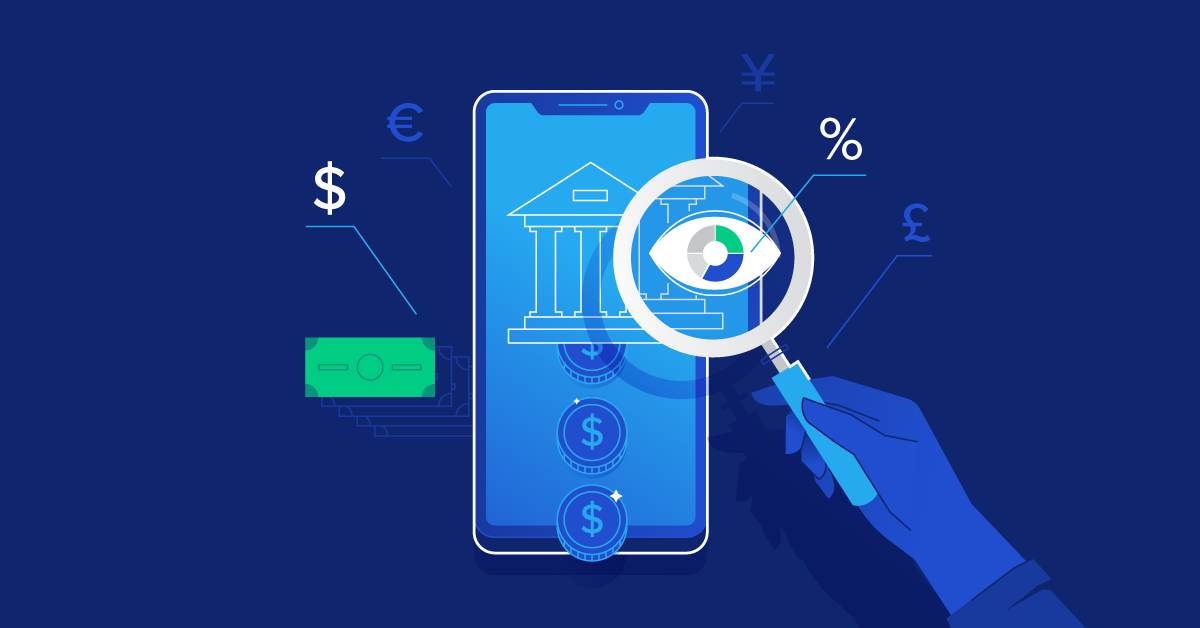Recently, innovative technologies and business models have been widely adopted, causing the fintech industry to experience a sharp rise. As per the Business research company, in 2025, the fintech market worldwide is expected to nearly reach $191.85 million, growing from approximately $111.24 billion in 2019.
As the Covid-19 pandemic approached, a surge was seen in the trend of financial software. A survey conducted by MX over about 1000 customers discovered that approximately 39% of the respondents are turning to online banking services provided by fintech organizations. That was all because of the outbreak. As per the deVere Group, from the onset of Coronavirus, usage of finance apps in Europe has risen by 72%.
It’s interesting to note that the number of fintech startups has tripled in the last two years. In 2016, there were 12,200 startups, and in 2024, the numbers increased to 26,000. Also, for financial technology firms, the total funding is now valued at approximately $121.7 billion, which shows an increase of $20 billion compared to the previous year.
Therefore, fintech software solutions will continuously grow in popularity in the future years. Surf software professionals will outline how to create a fintech startup from scratch. Let’s begin!
Below are five steps explaining how to create a fintech startup:

1. Select your niche:
Currently, the demand for every category of fintech software is steadily increasing. As per Finances online, personal finance management, alternative financing, digital payments, and alternative lending are the fastest-growing areas.
Investment solutions are also becoming more popular. According to The Mobile Finance Report 2024, there was a rise by 88% in the investment application’s average sessions while the number of sessions in banking apps rose by 26%.
While understanding how to create a fintech startup, you need to explore the types of software that will assist you in identifying the perfect niche for a financial technology startup. Let’s take a look.
-
Digital payment apps:
Factors like convenience and speed are causing online money transfer to gain popularity at an unprecedented growth. At the moment, the most significant segment across the fintech sector is the category for digital payment.
According to analysts at Research and Markets, digital transactions value will increase from $5.44 trillion to $11.29 trillion with a CAGR of 11.21% between 2024-2026.
E-wallets (Google Pay and Apple Pay), debit cards and credit cards are examples of the various payment options available today. As the usage of blockchain is increasing, there is also a rise in cryptocurrency payments. As per Statista, in 2024, there were about 63 million owners of crypto wallets.
When you’re figuring out how to create a fintech startup, we suggest that you incorporate crypto payments in your services offerings. That will help in improving customer engagement and achieving higher levels of security.

-
Personal finance management apps
Web and mobile apps made for the management of personal finance are continuing to dominate the market. With the help of such a software solution, the customers can quickly optimize and monitor their expenditures, carry out online transactions, plan their budget, and replenish and withdraw funds.
Are you wondering how to create a fintech startup and make it stand out? Consider offering features like tailored recommendations and data visualization via a chatbot powered by artificial intelligence.
To give you a real-life example, Mint is amongst the popular mobile applications for managing a personal budget. So far, the financial technology startup raised $31.8 million in total over five rounds.
Using Mint, people can keep track of their payments, pay their bills, analyze expenses, manage and view subscriptions. Additionally, the solution provides tailored suggestions on paying down debts quickly and how you can save costs.
If you have decided to launch your fintech startup in this category, first learn to create a mobile budget app here.
-
Digital lending applications
Amongst the niches for launching a fintech startup, a fast-growing niche is digital lending. For example, you could create an application or website to analyze and collect consumer data like account statements, salary, and credit history. Experts will determine every user’s creditworthiness more quickly based on the given information.
You can utilize Machine Learning technology if you want to develop an innovative banking product. Al-powered Fintech solutions will evaluate financial data and generate credit scores for existing and potential customers.
Many firms launched their fintech startups in this industry because they saw an opportunity of increasing lending operations’ efficiency.
Lenddo, founded in 2011, is a digital lending platform that uses machine learning algorithms to segment customers and determines credit scores. Lenddo has over 12,000 variables that involve using other finance applications and activities on social media.
To maintain data confidentiality, Lenddo does not disclose the personal data of customers to lenders. Since its inception, Lenddo managed to raise $14 million in 3 rounds.

-
Investment applications
If you want to build a financial technology startup, the best way is to develop an investment application. When creating this type of fintech software, it’s essential to offer various tools related to data analytics for stock trading and the management of investment portfolios. Also, you must hand out guides to help customers who have less knowledge.
For gaining a competitive edge, it’s ideal to have features such as reporting and robo-advisors. Also, you may begin your B2B fintech startup by offering specialized software to venture capital funds and investment banking companies.
Let’s take the example of Stockpile, a successful project built by Surf. This application enables you to invest in over 4000 ETFs and stocks with no commissions and trading fees.
A Fintech solution available on Android and iOS allows customers to gift stock through physical or electronic gift cards sold at famous retail chains such as Office Depot, Safeway, or Target. To assist beginners in investing smartly, Stockpile provides lessons, a guide, and blogs. So far, such a fintech startup has raised $45 million in 4 rounds.
-
Mobile banking apps
Creative banking products are increasingly being introduced in the industry, enabling financial companies to improve customer satisfaction, boost efficiency, and address the end-user’s needs. Now, most traditional banks provide a minimum of one mobile solution to customers.
Owing to the services of digital banking, institutions can now offer most services online. That’s essential in the competitive environment and especially during the Covid-19 pandemic. Experts at MX report that about 70% of customers believe mobile products represent banking in the future. According to the survey, 84% of participants engage in mobile banking at least once a week.
You can use the mobile banking app for different goals like:
- Opening bank accounts
- Tracking balance
- Paying bills
- Doing transactions
- Receiving cashback
- Exchanging currencies
- Viewing payment history
- Ordering payment cards
- Managing payrolls
- Receiving tailored financial advice
- Signing and generating transfer orders
To create an extra revenue source, you may make a software product offering supplementary services. For example, allowing clients to pay for mortgages, buy plane tickets, or donate money to a charity through a mobile application.

2. Ensure regulatory compliance
While figuring out how to create a fintech startup, it’s crucial to research the existing regulations and learn how to achieve compliance. If you don’t do this, you may have to face data breaches and fines of millions of dollars.
Financial technology firms, for example, must comply with the Payment Card Industry Data Security Standard (PCI DSS). The standard mandates that businesses that handle credit card information safeguard sensitive data against a variety of threats. PCI DSS was created in 2006 to ensure the security of payment accounts during transaction processing.
Another standard to consider when starting a fintech company is the General Data Protection Regulation (GDPR). GDPR mandates that businesses ensure European citizens’ data confidentiality and security, including biometric, personal, and genetic information. Fines for violations can reach 20 million euros in some situations.
Institutions must adopt data encryption, strong passwords, utilize anti-virus applications, and regularly check networks for security vulnerabilities to comply with GDPR, PCI DSS, and other standards.
Also, role-based data access management via biometric or two-factor authentication is required. Fintech companies can employ blockchains to assure data authenticity to improve data security.
3. Engage the services of a reputable fintech software development firm
When partnering with an unreliable IT partner, a fintech firm may encounter a range of challenges, including missed deadlines and poor software product quality (for example, unbudgeted expenses, poor performance, and complicated maintenance).
Choosing a reputable financial software development business is critical to creating a digital solution that fulfills the relevant criteria. When looking for an IT partner, look at their project case studies to determine whether they have any financial experience.
For example, at Surf, we created a bitcoin trading app that can be used on tablets and smartphones. The product caters to both amateur and expert traders by providing powerful analytical tools. Our engineers also developed a mobile banking solution, which we’ll discuss in more detail later.
It would be best to consider team members’ issues and experience when deciding whether or not software developers can assist you. Surf’s software professionals, for example, can help you prepare a technical specification, do market research, select a technology stack, maintain the system after launch, and conduct quality assurance.
It’s also a good idea to look into the company’s awards and client testimonials. You can do this by looking at rating systems and B2B reviews like GoodFirms and Clutch, as well as a possible IT service vendor’s website.

4. Select a type of fintech software development
You must choose a sort of software development or what operating systems and devices your fintech firm will support before you start constructing it. For example, you can target clients who use laptops and desktop computers to access your business by creating a website.
Consumers will undoubtedly be able to access a website from their mobile devices, but this would be least convenient than using mobile apps, which provide a more smooth user experience.
Because mobile solutions are becoming increasingly popular, you should think about developing a smartphone application. Decide among cross-platform and native (Android and iOS app development) options in this scenario.
Engineers must write two codebases for Android and iOS when developing a native app. As a result, you’ll have to manage two solutions that do identical tasks. Because of cross-platform technologies, you won’t need to recruit two distinct teams to complete your project. Software specialists use cross-platform tools to create software solutions faster and at a lower cost.
Although native applications appear to provide more outstanding performance, frameworks such as Flutter enable programmers to create high-quality mobile solutions. Our team at Surf created a mobile banking app that included currency exchange, account management, payment order production, and document sharing, all using Flutter.
It’s worth noting that this fintech firm was ranked first among smartphone apps in the insurance, finance, and banking sector by Tagline.
5. Begin by creating an MVP
Consider the MVP strategy if you want to learn how to establish a fintech company and boost your chances of success. Only the primary elements required to address end-user challenges are included in a minimal viable product. The time to market is significantly decreased because you are not building a sophisticated system with extensive capabilities.
An MVP allows you to put numerous hypotheses to the test, validate a project idea, and gather customer feedback. After measuring end-user reaction, you will have a clear picture of developing your solution to satisfy the audience’s preferences.
As a result, you’ll be able to deploy features that your customers desire and need, which will save you money. You may show investors the product and raise money for a finance firm by using an MVP.

Final words
It is critical to select a development approach and a niche when starting a financial company. You should perform competitor analysis and market research for this aim. That will also assist you in identifying user pain areas.
Another thing to do is research the financial regulations. That will enable the creation of a list of features to protect sensitive data. Also, you can reduce your chances of failure by employing a reputable financial software development business. Engineers will choose the optimum architecture and technology stack for a software system to ensure high availability, fault tolerance, and security.
You’ll cut project time and costs to market by using the MVP, and you’ll be able to expand a financial product based on customer input.
Preview:
Are you wondering how to create a fintech startup? Well, you’ve come to the right place. In this article, you’ll learn how to develop a fintech startup in only five steps. All you have to do is follow the guide, and you’ll achieve success. Start by picking a niche and a development approach. After that, you have to ensure regulatory compliance and take help from a reputable fintech software development firm. Then, simply select a type of fintech software development and create an MVP. That’s it, and you’re good to go.





